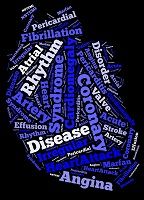European Docs: US Uses Too Many Statins
Statins should not be physicians' first option in treating all patients at high risk of cardiovascular disease, according to new European treatment guidelines.

Appropriately enough for meeting held in Rome, Italy, at today’s European Society of Cardiology 2016 Congress, the European Society of Cardiology (ESC) and European Atherosclerosis Society (EAS) said clinicians should stress a Mediterranean-style diet in patients at high risk of cardiovascular disease. They also said high risk patients who do not have high cholesterol should not be prescribed a statin.
The updated treatment rules--released today at the meeting--take a more moderate position than those of US specialty societies on prescribing statins or other drugs.
Physicians should rely more on their own assessment of each individual patient, rather than simply numbers, in deciding who needs cholesterol-lowering medications, the European societies said.
In new ESC/EAS guidelines recommend an individual LDL cholesterol target based on risk (defined by comorbidities and 10-year risk of fatal cardiovascular disease (CVD). For example, in high risk patients the target is LDL cholesterol less than 2.6 mmol/L (100 mg/dL).
This “person-based” approach differs from US guidelines which recommend giving a statin to all high risk patients even if they have low cholesterol.
“The American approach would mean considerably more people in Europe being on a statin—the task force decided against this blanket approach,” said Ian Graham a physician from Ireland who is the ESC’s chairperson on the guidelines task force.
“The relationship between lipids, particularly low density lipoprotein (LDL) cholesterol, and CVD is strong, graded, and unequivocally causal. Heart attacks rarely occur in populations with extremely low lipid levels, even if people smoke,” Graham said.
Cardiovascular disease kills over 4 million people in Europe annually, but the task force believes 80% of the cases of the ailment could be prevented by behavioral changes.
A large population of high risk people who are inert and overweight have their cholesterol lowered by drugs but then ignore their other risk factors, the task force physicians noted.
“Lipids are probably the most fundamental risk factor for CVD,” Graham said.
“Those at high risk should be the top priority for doctors treating patients one-to-one,” Graham added. “But most deaths are in patients with only slightly high cholesterol because there are vast numbers of them. It means that population approaches for lowering lipids - such as lifestyle changes - are also needed.”
The guidelines also call for reducing LDL cholesterol in all patients by at least 50%, regardless of risk.
However, the new recommendations acknowledge that diet and lifestyle changes are not always easy to achieve and stress the need to lower lipid levels in populations and in high risk individuals.
Alberico Catapano, an Italian physician who chairs the EAS task for said the guidelines are a careful compromise. “We made a blend between goal of LDL cholesterol level and percentage lowering to make sure all patients achieve at least 50% reduction of LDL cholesterol,” Catapano said.
The guidelines emphasis lifestyle and nutrition and set goals for body mass index and weight.
Dietary advice stresses limiting certain foods.
“There is more emphasis on choosing foods like cereals, vegetables, fruits and fish than on saying ‘thou shalt not ever eat fat’,” said Graham.
The guideline change follows the release of results of two trials on the Mediterranean diet—presented earlier this year at the American College of Cardiology meeting in Chicago,IL, which showed a dramatic benefit and positive effect on mortality.
“We’re not saying you shouldn’t be careful of saturated fat, we’re saying if you make positive food choices, particularly if you find enjoyable ones, it’ll be easier to manage,” Graham said.
For patients who cannot lower their cholesterol sufficiently through diet changes, the guidelines make recommendations for combination treatment in patients with resistant high cholesterol.
Statins are the first line treatment. Combined therapy with ezetimibe and a statin provides an incremental reduction in LDL cholesterol levels of 15 — 20%.
Proprotein convertase subtilisin/kexin type 9 (PCSK9) inhibitors are a last resort, but can be considered in patients with persistent high LDL cholesterol on a statin and ezetimibe.
“The PCSK9 inhibitors have a substantial effect over and above maximum therapy and are a real advance for patients with severe familial hypercholesterolemia, for example,” Capatano said, “However, they are extremely expensive and therefore their use may be limited in some countries.”
“We hope clinicians will make every effort to lower their patients’ LDL cholesterol as much as possible,” he said.